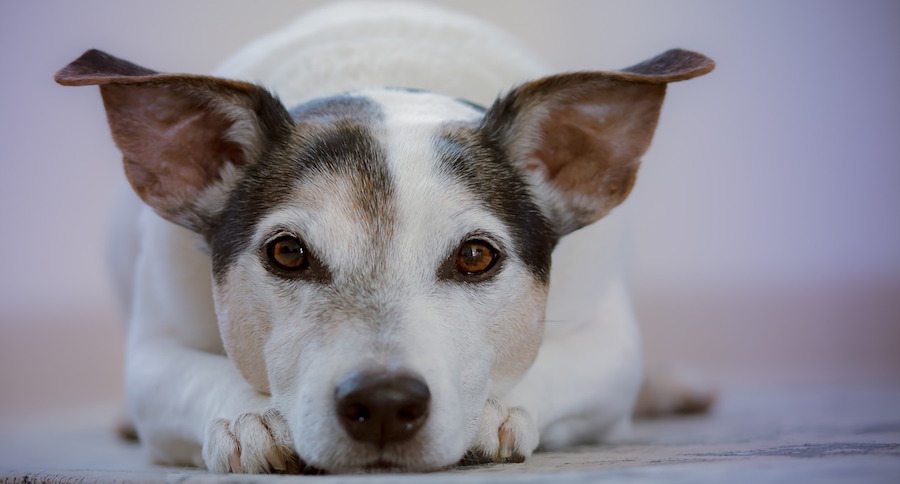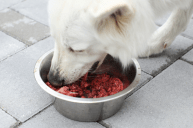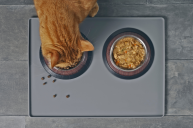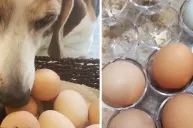If you've decided 2018 is the year to start feeding your dog a raw diet, you might be in for a challenge.
Believe it or not, a lot of dogs have little interest in raw food or treats. Why? Well, according to veterinarian Dr. Victor Oppenheimer, it's mainly because of the taste.
"Cooked food has been prepared to be tasty, while raw means that it is unchanged," he says.
The type of raw diet you chooose can also affect your pet's interest - or lack thereof - in it.
Registered vet tech Carolyn Miller says:
"Some diets are of the prey model, some include fruits and vegetables, and some are actually commercially manufactured...These differences can impact whether your dog will touch her plate or not."
So, if you find your dog turning up his nose at a raw diet, here are six ways to tempt him.
1. Add Raw Goat's Milk to the Meal
Too much dairy isn't good for dogs, but raw goat's milk is an exception. Adult dogs can digest it well, and it's chock full of important nutrients such as calcium, B6, protein, and potassium. It's also much lower in sugar than cow's milk and has twice as much vitamin A, says Oppenheimer.
The potent flavor of goat's milk might deter some dogs, but others might be all the more tempted to give their meal a try because of it.
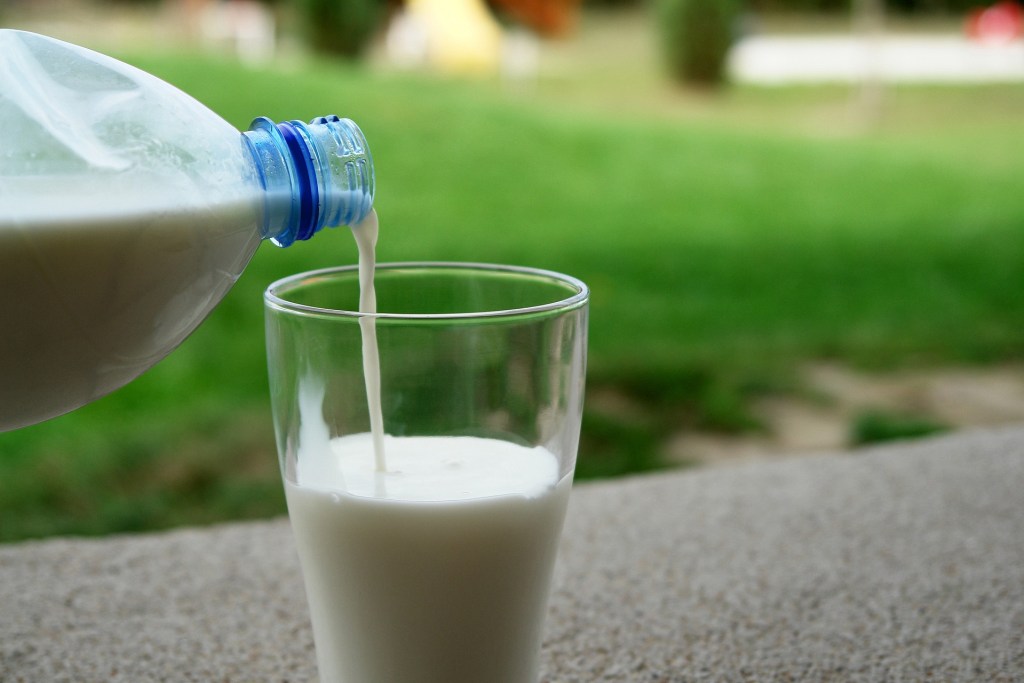
2. Throw in Some Krill Oil
Krill oil, like fish oil, has a strong smell and taste, which might tempt your dog's senses enough to make him more willing to taste the meal in front of him. Krill oil, however, is nearly 50 times more potent than fish oil, so you can use a lot less and achieve the same effect. It's also antioxidant-rich, which provides added benefits for your dog's heart and brain, says Oppenheimer.
Krill is also less likely to be contaminated with mercury and other heavy metals (like certain fish oils are) because it comes from Antarctica, an area with lower exposure to such toxins.
3. Change Up the Protein
Figuring out what your dog's favorite meat is might be a bit of a process.
Miller says:
"When varying the proteins in a raw diet, many claim adding small amounts of organ meat may increase the pet's interest in consuming the raw diet...Some raw feeders add an egg, shell included, to their pet's food."
Before you go nuts with the mystery meats, be sure to talk to your vet. Certain raw meats and fish, such as salmon, carry a high risk of contamination, so it's important to educate yourself about what to avoid before you go playing mad scientist with your dog's dinner.
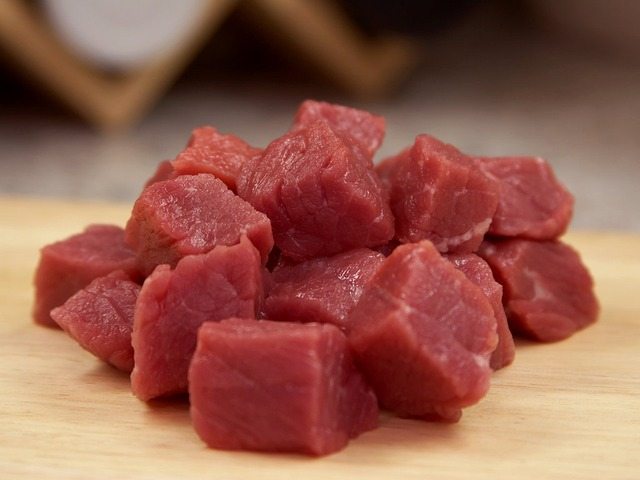
4. Heat It Up
Raw means uncooked. But it doesn't necessarily have to mean cold. In fact, a lot of dogs refuse raw food simply because of its temperature. Oppenheimer notes that owners of picky dogs should pay close attention to their pets' preferences when it comes to food temperature.
If you're having trouble getting your dog to take interest in his raw meals, add some hot water to the food. If you're transitioning from a regular diet to a raw diet, cook part of the food and blend it in with the rest of the raw ingredients to make the transition more palatable.
5. Experiment a Little
Your dog's lack of interest in a raw diet could be due to something simple like the food's texture, shape, or consistency.
According to Miller:
"Many people have found that creating 'balls' to mimic the kibble shape, feeding in a different location or simply not using a food bowl works for them."
Since many dogs are more attuned to the experience of the food (texture and consistency, for example) than the actual substance of it, Oppenheimer suggests adding some water to the meal or mashing it up to change its consistency.
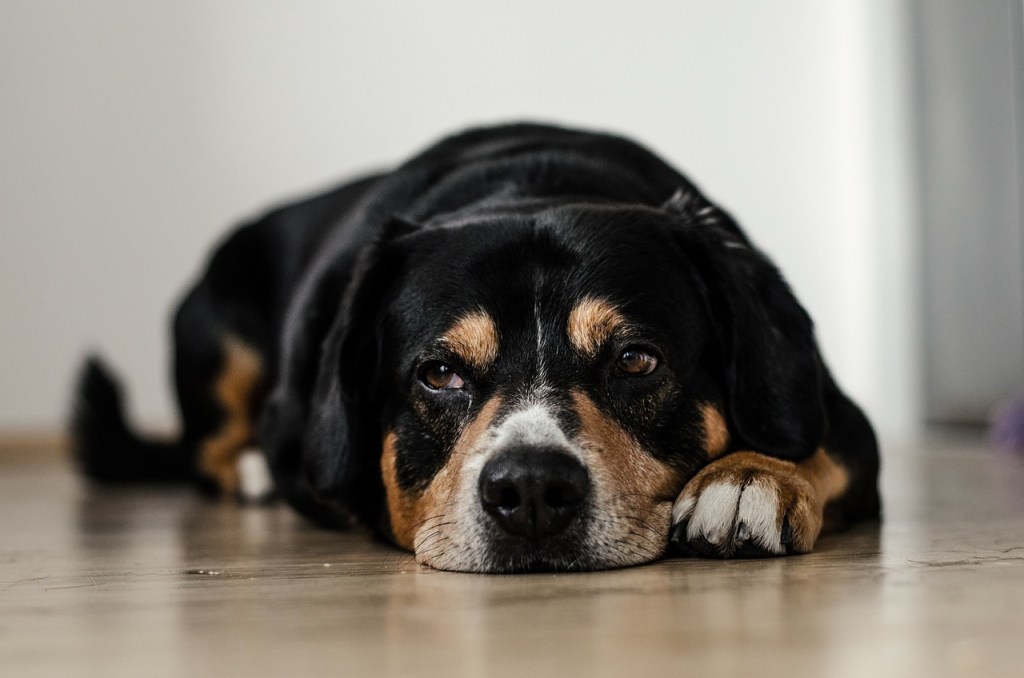
6. Don't Ignore the Warning Signs
Despite your best efforts, your dog may still refuse to eat raw. Be prepared to accept this possibility. Also, some dogs that eat raw may fail to thrive on a raw diet. If you've been feeding a raw diet but notice a general decline in your pet's health, speak to your veterinarian immediately.
Oppenheimer says:
"With any food that you give to your pet, there is reasonable visible general health which includes healthy skin, strong bones and beautiful fur/hair...[Normal annual lab tests] combined with a good playful attitude and general good health should be a standard way to decide if you need to remove the raw food and take your dog back to kibble."
Remember, raw feeding is not one size fits all. If you're thinking of switching your dog to a raw diet, speak to your veterinarian before you do so. He or she can give you proper guidance and suggest amounts and ingredients appropriate to your individual dog.
Do you feed your dog a raw diet? What tricks do you use? Tell us in the comments section!
WATCH NOW: Doggie Water Fountain Looks Like Too Much Fun!
